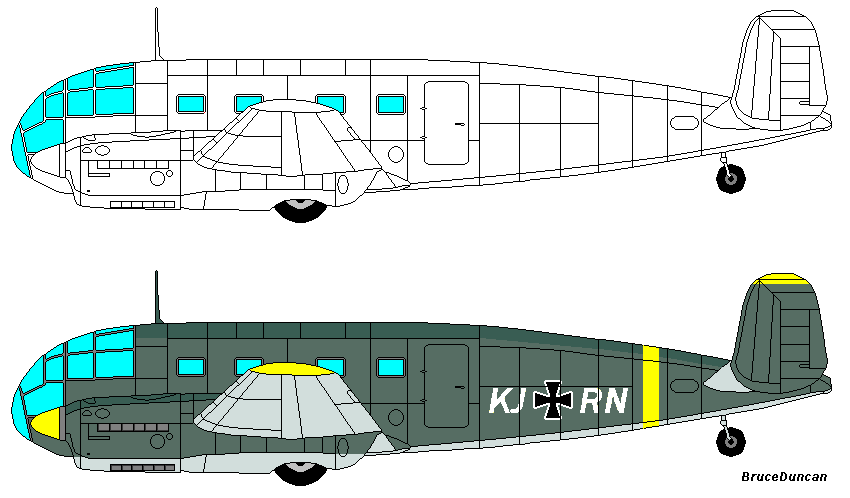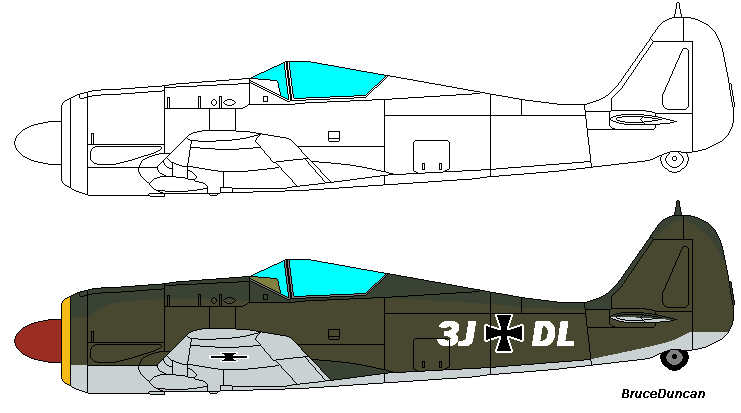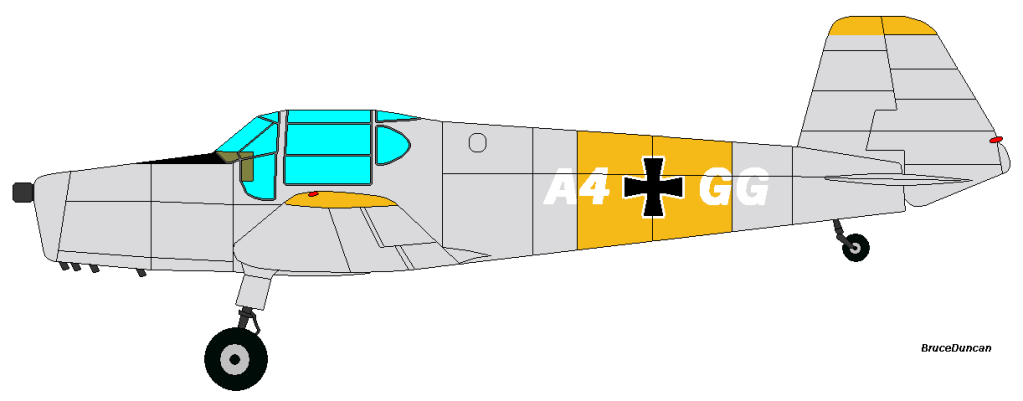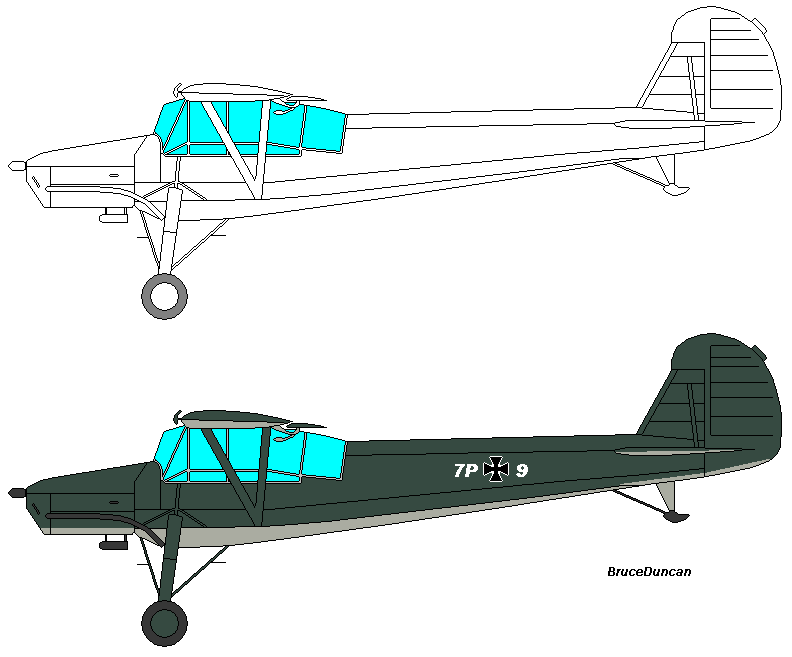Technical Description
Low wing cantilever monoplane. Wing in one piece, the front spar being continuous and passing through the fuselage, to which it is attached at three points – two on the upper flange and one on the lower. The rear spar is in two sections, the roots being attached to the sides of the fuselage by normal pin joints. Two spar wing structure with widely-spaced flange plate former ribs, span-wise Z-section stringers and a stressed metal skin. The spars are built up of flanged plates which, inboard from the ailerons, are reinforced by L-section extrusions and progressively thickened end caps to form I-section members. Outboard of ailerons the spars have single integral flanges. The front spar from the points of attachment of the undercarriage to the upper attachments to the fuselage is cranked inward, the undercarriage when retracted lying ahead of the front spar. The gun and undercarriage bays have specially strengthened ribs. Metal framed, fabric covered ailerons. Electrically operated all metal split trailing-edge flaps between ailerons and fuselage.
Fuselage is an all-metal monocoque structure built-up of bulkheads, flanged formers, Z-section stringers and a smooth stressed skin covering. The front inverted U-shaped bulkhead attaches to the upper flange of the front spar and on the front face of the bulkhead and spar are five attachment points for the engine mounting – three on the spar and two on the bulkhead. All other bulkheads and frames conform to the cross-section of the fuselage. The extreme rear section is integral with the fin and is detachable from the main structure. Large detachable panel in the underside of the fuselage extending from the engine bay to rear of cockpit for installation and removal of fuel tanks.
Cantilever monoplane type tail unit. Fin integral with the rear fuselage. Electrically operated adjustable single-spar tailplane and fin and fabric covered control surfaces. Fixed perforated trim tabs in rudder and elevators. Fin-rear fuselage assembly houses the electric tailplane incidence gear and spring for lowering the tail wheel.
Retractable type undercarriage. Main cantilever oleo-legs are hinged ahead of the front spar and retract inwardly, fairing plates on legs and wheels and on the undersurface of the wings closing the apertures when the wheels are raised. Electrical retraction. The tail wheel is also partially retracted by a cable connected to the starboard oleo-leg. Tail wheel has spring centering and centre-lock, the latter operating when the control column is pulled hard back.
One BMW 801D fourteen-cylinder two-row radial air-cooled geared and supercharged engine in low-drag cowling with induced fan cooling, rated at 1,700 hp for takeoff and 2,100 hp with MW50 boost at altitude. The whole engine unit, complete with oil coolers, is attached to the front bulkhead and spar by five bolts. Protected fuel tanks beneath the cockpit floor. Oil tank (42 litres) in fuselage. Reverse flow oil coolers in armoured annual ring which forms the cowl leading edge. VDM airscrew with electric pitch change and metal blades.
Pilot’s cockpit over trailing edge of wing with clear view canopy and tail fairing, the whole of which slides aft to give access to the cockpit and which may be jettisoned complete in an emergency. Pilot’s seat is armoured and is further backed by an armoured bulkhead and headrest, the latter forming part of the jettisonable cockpit canopy. Bullet proof windscreen. The wireless aerial lead is in the roof the canopy. The canopy cannot be opened in the air except to be jettisoned. Armament comprises two 13mm MG131 with 220 rounds of ammunition in the forward fuselage decking and two 20mm MG201 with 150 rounds of ammunition per gun , located in the wing roots and synchronised to fire through the propeller arc. Attachment points in the outer wing panels for two 100 kg bombs; attachment point beneath the centre fuselage for one 120-litre jettisonable auxiliary fuel tank.
Wing span 10.5 metres; length 8.84 metres; height 3,96 metres. Wing area 18.3 metres. Take-off weight with armament and normal fuel 4,430 kg; maximum permissible take-off weight 4,900 kg.
Maximum speed without MW boost 643 kph at 5,500 metres; with MW boost 653 kph at 6,300 metres. Climb to 10,000 metres without MW boost 26.5 minutes, with MW boost 16.5 metres. Service ceiling 10,300/11,400 metres. Cruising range with normal fuel 1,520 km at 477 kph at 7,000 metres. Endurance 3 hours 20 minutes.













